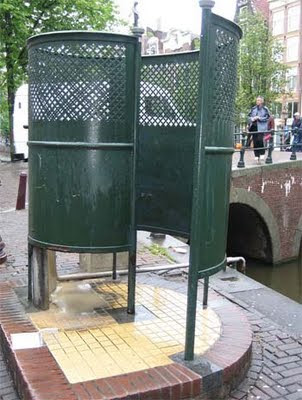When I got the email asking whether I owned a trilby, the alarm bells started ringing. Shortly afterwards, another appeared enquiring after my stock of 1950s-style shirts, ties and braces. Then a third arrived demanding neck and chest measurements.
I’d been using the same promotional photo for around eight years, and to be perfectly honest, had grown a bit ‘older and wiser’ in that time. I’d once heard Bryan Ferry on the radio admitting that he used a ten-year-old picture on one of his solo albums, and remembered thinking what a charlatan he was — albeit a devilishly stylish one. And yet here I was, a photographic hypocrite lagging only two years behind the old slave to love.
However, the final straw was when Greg Quinton of the Partners button-holed me at an awards do, and politely mentioned he was sick of the sight of my profile picture. I’m pretty sure that didn't account for the recent radio silence from his agency, but it was certainly high time for a change.
I probably should have known better, but when my friend the commercials director
Mark Denton told me Coy! had a small photographic studio in their new space at Westbourne Studios, I waded right in. “Sure,” he said, “[Fellow commercials director]
Sean [de Sparengo] will sort you out.”
Mark, I know only too well, is a man who has his portrait taken as regularly as most of us have hot dinners. He enjoys the glare of the spotlight and the mantle of many guises. A few years ago, he had a series of ‘ancestral’ shots taken by Malcolm Venville for his mock stately home (a basement flat in West London).
These masterpieces included Mark posing as a deranged Viking called Fireguard the Fearless, a lascivious monk, and a fey Gainsborough-esque country squire.
Then there was Mark’s turn as the incomparable
Nobby Bottomshuffle, baggy-shorted Edwardian football pin-up, and face of Coffmore cigarettes, whose life of free-kicks and free fags was cut tragically short in the trenches. A collection of comical full-length poses — which make Peter Crouch look as elegant as a prima ballerina — formed the basis of a packed one-off exhibition in Soho (free booze was involved). And Nobby has now found a permanent home in the
National Football Museum in Preston.
More recently, Mark has appeared sepia-toned as
Il Presidente, the exotic sashed-up and fez’d-up president of the
Creative Circle.
If there’s such thing as an embarrassment gene, Mark was seemingly born without one. To compensate, he has a highly developed sense of the ridiculous, and enjoys poking fun at himself. With a very large stick. So I had half an idea of what I was in for, as I made my way to West London, carrying my bubble-wrapped D&AD pencil, which I’d been instructed to bring along as a prop. But I was determined to put any sense of self-consciousness aside and enjoy the ride.

When I got to Coy! and was introduced to Sean, I quickly realised that the shot was being taken slap bang in the middle of the room, as half a dozen disinterested people got on with whatever they were getting on with. Mark handed me a book called
‘Mr Salesman’, a collection of highly stylised 1950s ‘noirish’ portraits by
Jamison Handy curated by (of all people) actress
Diane Keaton. We were to recreate one of the shots — a film-starrish, bryllantined chap striking a thoughtful, chin-stroking pose (below). This is OK, I thought, forgetting where I was for a moment.
I went to my dressing room (the gents) and donned a white shirt and a striped tie. Mark shook his head. “You don’t wear a tie very often,” he remarked, deftly picking out another of his own, tying a perfect half Windsor, and then handing it to me like a noose. I was instructed to get into the role of an ‘Ace Reporter’, clutching a notebook in one hand and my black pencil in the other at a suitably nerve-wrenching angle.
We started gently. Then Mark and Sean got into a rhythm. The camera clitter-clattered, and I could see image after image appearing on a screen behind through the glare of the lights.
“OK, you’re in a crowd interviewing Elizabeth Taylor, you’re delighted… yes, getting there, getting there…” Fern magically appeared with powder and brush, dusting the shine from my forehead. “Right, you’re interviewing Marilyn Monroe, and she’s just lifted her top up…”
I finally cracked. All semblance of cool or cred went out the window. My face pulled into an idiot grimace, half crazed, half in character. “That’s it! That’s it!” shouted Mark, bursting into uncontrollable laughter.
Yes, I’d been officially Coy!’d. Thanks to everyone for the experience.









































